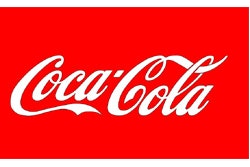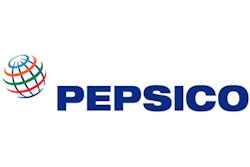BELLVUE, Wash. (The Hartman Group) — There’s been quite a bit of commotion in the past year surrounding regulation and mandates and packaging and marketing to kids, and while the focus on products and nutrition panels has been somewhat helpful, The Hartman Group believes that the obesity issue is really one that is symptomatic of larger cultural shifts occurring in how people in America eat…and eat too much.
If the pragmatic problem is that we eat too much, the more tragic problem is that as a society, we appear remarkably ill-equipped to confront the problem directly. Instead, we’re treated to a teach-and-tinker approach with vague platitudes like “learn to eat healthy,” “get plenty of exercise,” and “watch out for junk food.” In truth, none of these solutions will ever prove effective if we continue to indulge at our current caloric pace. The time has come to stop focusing on just the parts, which to date have included education on packaging and nutritional panels, placing the blame on manufacturers and QSRs, and noting the availability of “bad” food; instead, we must start to focus on the whole, which is essentially a cumulation of how we, as a culture, eat and its direct effect on what and how much we’re eating.
The Influence of Food Culture: Eating All Day & Night
Culture is the lens through which consumers come to understand food, and, over the years, food culture has shifted from a planned, rational and utilitarian attitude to today’s emphasis on distinction, specialization, and authenticity. While part of the shift has been towards fresher and less processed foods, the fact is that we are giving up meal occasions with others or combining eating with other tasks as the need for productivity compels us to move forward. Many consumers also believe that hectic American lifestyles lead to poor eating habits in order to meet family priorities around time management rather than weight management. Combine these two thoughts, and, put simply, we appear to be eating much more food, far more frequently, and mostly alone, than at any previous point in American history.
In fact, 46% of all adult eating occasions happen alone, with nobody else present; 40% of all adult meals (not just snacks) are eaten alone; and 51% of all adult snacking is done alone. The top three adult alone-eating occasions include the instrumental afternoon snack, instrumental breakfast, and instrumental lunch, with the instrumental eating occasion reflecting a way of eating to get things done.
While 31% of adult alone-eating is about savoring a higher-quality food experience, for the majority of Americans, kids and adults alike, when we eat alone, we eat mindlessly, and eat more; there is no one there to see what we’re choosing to eat and how much of it we’re eating. This falls into the “snacking as a problem” bucket. All in all, snacking is happening more often than meals and has grown to define much of the way we eat.
Culture of Food: Zones of Quality
Healthy Snacking as a Solution
Snacking holds a unique role in American food culture and the definition has changed substantially in the past 20 years. Snacking is no longer “special,” infrequent, just for children or confined to only a small number of product categories. And, beyond the increased frequency with which we snack, snacks themselves have evolved far beyond conventional categories to include fresh items and higher-quality products (38% of adult snacking is savoring), and involve both food and beverage items (56% of occasions involve both, 30% involve just food and 14% involve just a beverage).
As the “snacking as a problem” category was introduced earlier, snacking can also be seen as a solution if it includes healthy, fresh, portion-sized and less-processed snacks. Snacking is becoming healthier, and healthy snacking is as much about ways of eating as product attributes, with beliefs that eating small amounts of food every few hours is healthier than three big meals a day, that distributing small treat moments helps to avoid over-indulgent binges, and that overall balance can be achieved by rotating indulgent and non-indulgent.
As such, food marketers can most effectively compete for this growing share of food dollars by:
- Adapting or extending product lines to snacking occasions (e.g., smaller portion sizes)
- Innovating into snackable formats (e.g., on the go, at desk, etc.)
- Building strategies to protect against losing customers to food service on snacking occasions
- Tapping the desire for higher-quality food experiences in snacking
- Considering how to win in early morning and late night snacking occasions, where culture dictates few rules
To address the solitary eating issue and embrace the opportunity to market to the vast number of adults who are increasingly eating alone, companies must think beyond marketing to family occasions.
Over half of adult alone-eatings take place in the home, and marketers need not cede the sourcing for alone occasions to QSR or other food service channels.
- Connect with consumers on these solitary occasions—both with marketing and product innovation
- Consumers ARE cooking for themselves on alone occasions! Provide them with the meal components they need to enjoy this occasion
Social eating can offer a natural method of portion control by making compulsive eating virtually impossible because the individual is accountable to the group for what is eaten; and, ideally, reinforces the social structure of the group through division of labor involved in cooking and serving food. Companies can encourage planning and socialization of snacking and indulgence eating while also offering better quality or healthier foods. Tell us to enjoy ourselves, but to enjoy ourselves socially, not in isolation. It may not really prevent someone from gaining weight all by itself, but it demonstrates empathy for the dark side of our most favorite eating. It also sanctifies our hedonistic urges and avoids the possibility that your product or brand will become seen as a killjoy by a yo-yo dieter in a foul mood.
Companies can also devise marketing campaigns that demonstrate empathy for our cultural love of snacking while stimulating us to think of creative ways to socialize it, and with better quality food. These should not focus on demonizing “bad foods” but rather on transforming snacking into a memorable, social experience like it used to be (e.g., afternoon tea, after-school treats, etc.). Not only does this include creating a desire for better quality foods and snacks in the marketplace, but also perhaps providing smaller packaging to emphasize the indulgence and specialty factor, which, in turn, can begin a conscious effort to help people reduce what they eat.
Source for all eating occasions data in this article: The Hartman Group Eating Occasions Compass, 2012 (n= 14,697 eatings)
Amy Sung contributed to this Hartbeat article. Amy’s passion is writing about food culture and she has written for various industry publications and websites.






















